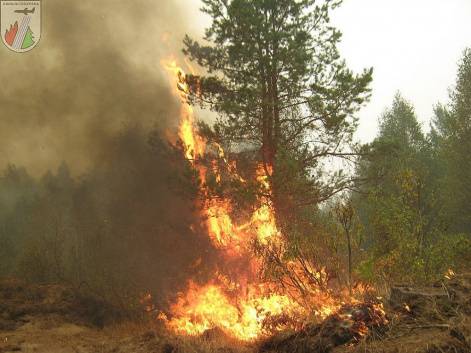Scientists: "Fires in Siberia is a global problem!"
30 July 2019 г.

Data on the Krasnoyarsk Region: on July 15, 285 thousand hectares of forest are burning. July, 22 - 755 thousand hectares, and on the 29th - almost a million (993 thousand) hectares are caught by fire. This is mainly, the north, Evenkiaysky Boguchansky, and Kezhemsky districts. It is hard for people to breathe, smoke threatens people’s health and life.
-Yevgeny Ivanovich, how do you estimate the situation with forest fires?
- So, recently, the area of active fires has been 993 thousand hectares. And most of them are located in the area officially designated for satellite monitoring.
Let me explain: the whole area of Russia is divided into four zones. There is a ground protection zone. It is clear that here the most effective fire detection methods are applied with prompt response to fires. As a rule, this is a populated zone with villages and settlements.
There is an air patrol area. This is the southern part of Siberia. In this zone a prompt response to fires is possible, which is made by sending special equipment and airlifted forces.
And all the other area to the north of the Angara, namely, Evenkiya, Yakutiya, and the Chukotka region is included in a zone of satellite monitoring. This is not our idea, this is the official distinction adopted at the Federal Forestry Agency Rosselkhoz and other fire tracking services.
No actions are taken in this zone either to prevent fires or to stop them. We only estimate the extent of the impact. We can estimate areas, emissions and so on. This is our reality today.
This is probably unfair and wrong because it is in this zone that up to 90% of all forest areas burn. This means that 10% of the area are caught in fires in the monitoring zone of ground control and aviation and 90% of the area burns out, with no one extinguishing it.
- Almost a million hectares of taiga are burning, what can be the consequences?
- The consequences can be very different. It is necessary to thoroughly analyze them and to develop various scenarios.
The first is the huge amount of carbon emissions which we have experienced on ourselves over the past two weeks. This concerns Krasnoyarsk and Western Siberia as well as the Irkutsk region. Meanwhile, these emissions may achieve the Volga area. To tell the truth, we observed the emissions even in the Moscow region. When the wind blows from the east, it can carry these emissions over several thousand kilometers.
Using satellite methods, we have developed technologies to literally estimate the scale of emissions. Emissions from fires can vary from 20 teragrams - that is, 20 million tons (a year with few fires) to 200 teragrams and higher. Now we have such a period when we can have even more than 200 million tons of emissions of carbon-containing gases into the atmosphere.
Share:
